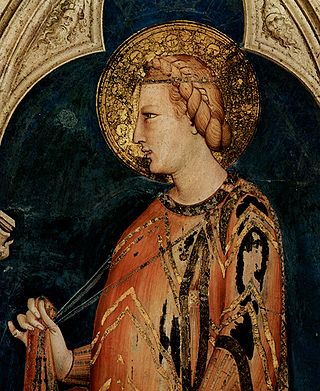
Elizabeth of Hungary, also known as Elisabeth of Thuringia, was a princess of the Kingdom of Hungary and the landgravine of Thuringia.

Jutta of Kulmsee, was a German member of the Third Order of Saint Francis.
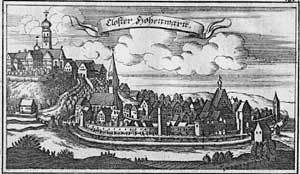
Hohenwart Abbey was a Benedictine nunnery located at Hohenwart in Bavaria, Germany.
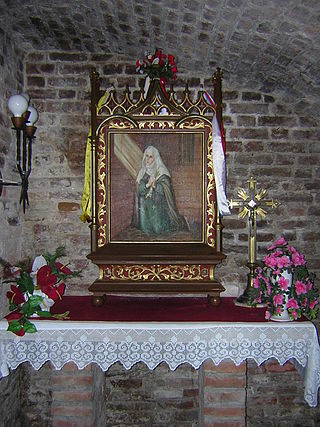
Dorotheaof Montau was an anchoress and visionary of 14th century Prussia. After centuries of veneration in Central Europe, she was canonized in 1976.

Bad Waldsee is a town in Upper Swabia in Baden-Württemberg, Germany. It is part of the district of Ravensburg. It is situated 20 km south of Biberach an der Riß, and 20 km northeast of Ravensburg. The town is known for its historic old city with many landmarks and large pedestrian zone. Bad Waldsee is the district center for the Bodensee-Oberschwaben district and is the seat of the townships of Bad Waldsee, Aulendorf and Bergatreute.
The Third Order of Saint Francis is a third order in the Franciscan tradition of Christianity, founded by the medieval Italian Catholic friar Francis of Assisi.

Elisabeth of Schönau was a German Benedictine visionary. She was an abbess at the Schönau Abbey in the Duchy of Nassau, and reportedly experienced numerous religious visions, for which she became widely sought after by many powerful men as far away as France and England.
Elisabeth of Meissen, Burgravine of Nuremberg was the daughter of Frederick II, Margrave of Meissen and Mathilde of Bavaria and a member of the House of Wettin.

Mary Frances of the Five Wounds, TOSF,, was an Italian Third Order Franciscan who is honored as a saint in the Catholic Church.
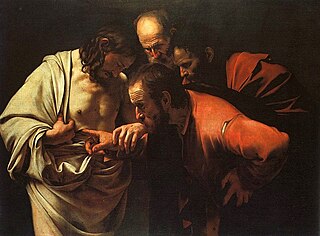
A number of people have claimed to have had visions of Jesus Christ and personal conversations with him. Some people make similar claims regarding his mother, Mary. Discussions about the authenticity of these visions have often invited controversy. The Catholic Church endorses a fraction of these claims, and various visionaries it accepts have achieved beatification, or even sainthood.

Heggbach Abbey was a Cistercian nunnery in Heggbach, now part of the municipality of Maselheim in the district of Biberach, Baden-Württemberg, Germany.

Within Catholicism, a miracle of the roses is a miracle in which roses manifest an activity of God or of a saint. Such a miracle is presented in various hagiographies and legends in different forms, and it occurs in connection with diverse individuals such as Saints Elizabeth of Hungary (1207–1231), Elizabeth of Portugal (1271–1336), Saint Dorothy, a 4th-century virgin martyr at Caesarea in Cappadocia, and Our Lady of Guadalupe.
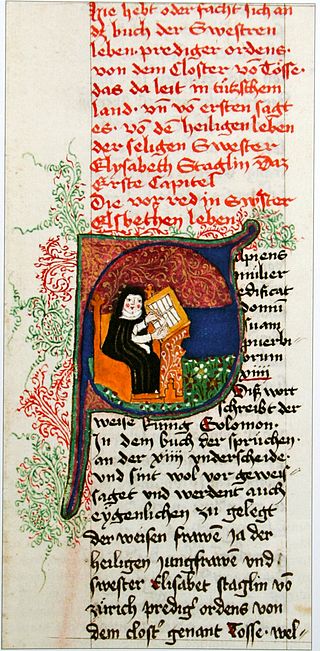
Elisabeth or Elsbeth Stagel was a Dominican nun and prioress of the Töss Convent.

Töss Monastery was a community of Dominican nuns located in the former Swiss city of Töss, now a part of Winterthur. Nothing of the original buildings exists today.
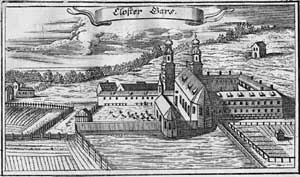
Gars Abbey is a monastery on the Inn River in Bavaria, Germany, in the town of Gars am Inn. It was founded in 768 and has been occupied by Benedictine monks, Augustinian Canons Regular, and most recently Redemptorists.

Helmut Alfons Schlegel is a German Franciscan, Catholic priest, meditation instructor, author, librettist and songwriter. He is known for writing new spiritual songs, set to music by various composers.

The Ecstasy of St Margaret of Cortona is an oil on canvas painting by the Italian Baroque painter Giovanni Lanfranco, executed in 1622. It is housed in the Palatine Gallery of the Pitti Palace in Florence, Italy.

Nothgottes is a Cistercian monastery and a pilgrimage destination above Eibingen, in Rüdesheim am Rhein, Hesse, Germany. Pilgrimages to the location date back to the 14th century, and have continued to the present day, especially an annual pilgrimage from Kruft that began in 1674.
Konrad Kügelin (1366–1428) was a Roman Catholic monk, provost of the Collegiate Church of St. Peter, Bad Walsee, and hagiographer of Elizabeth of Reute.
















